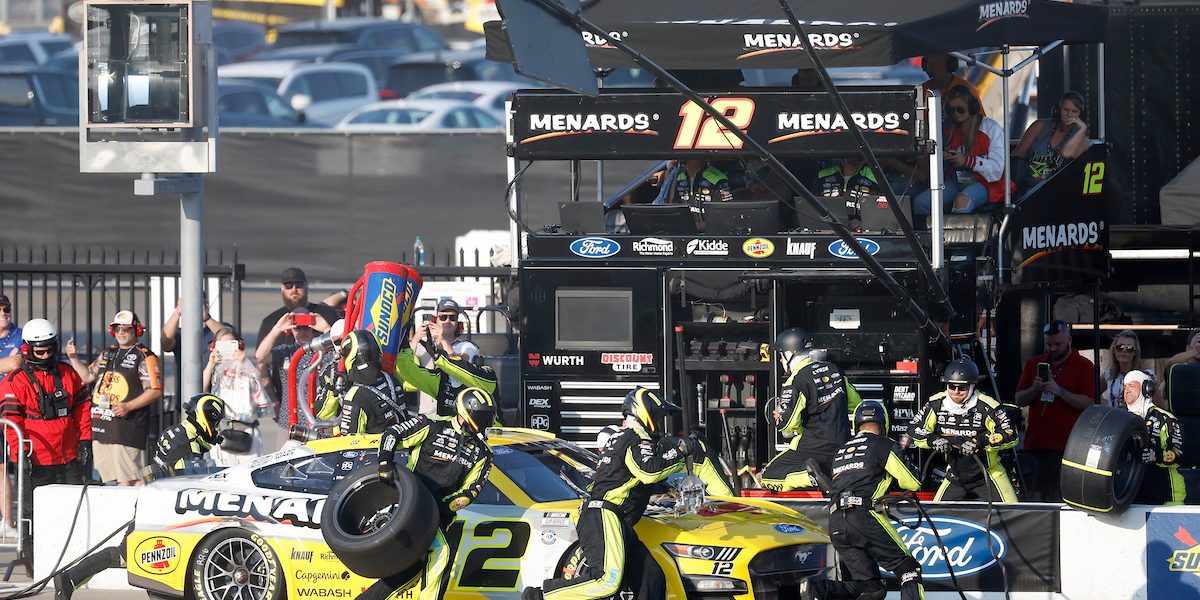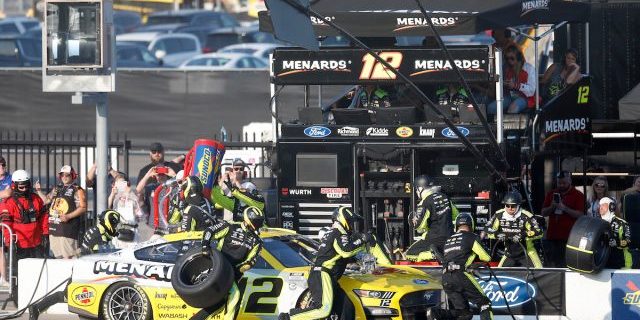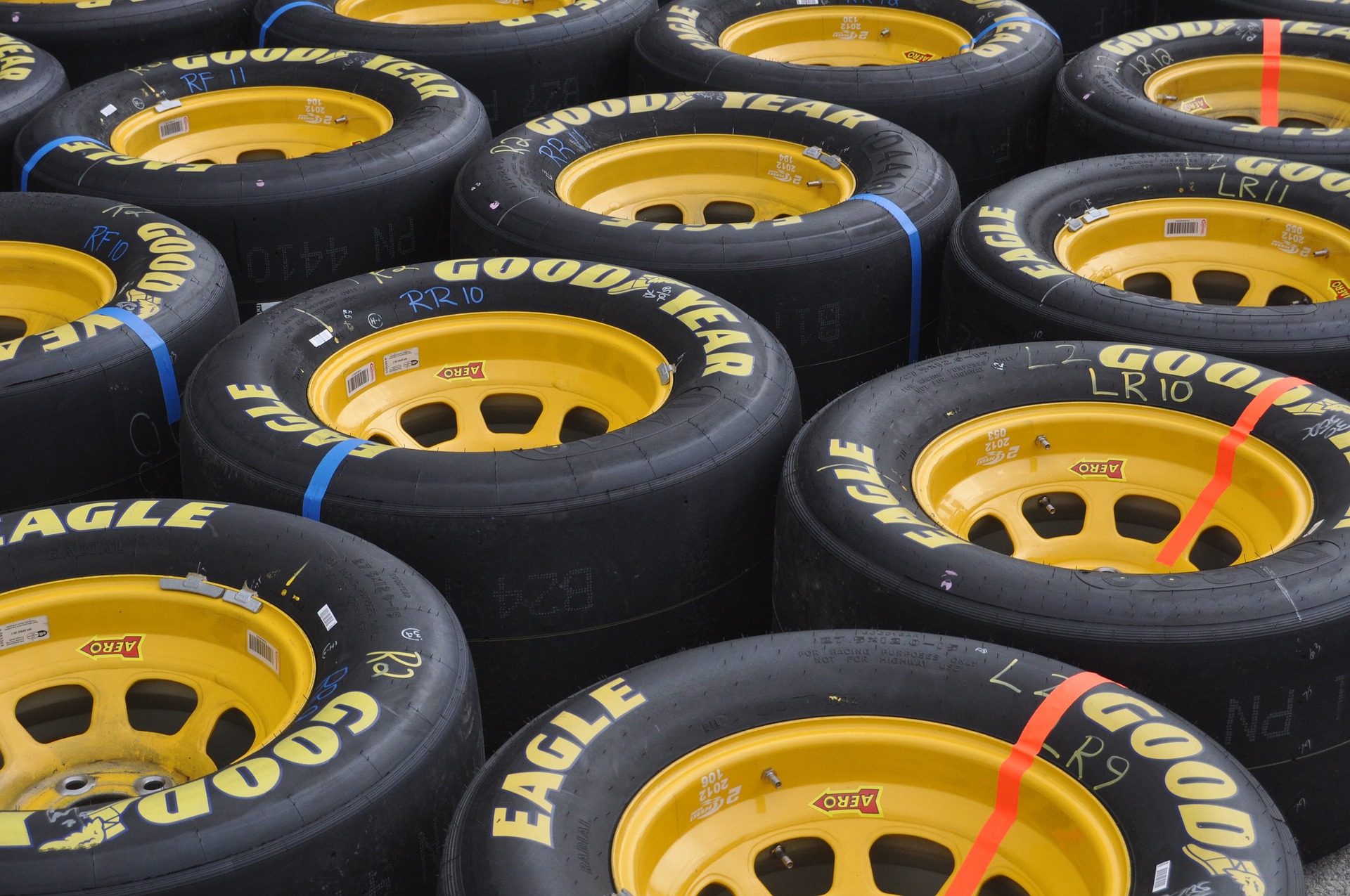Do NASCAR drivers pay for their tires?


Have you ever wondered, do NASCAR drivers pay for their tires? It’s a common misconception that they do, but the truth is that NASCAR teams don’t buy tires from a supplier or pay for them out of pocket. Instead, they receive them as part of their contract with Goodyear, the exclusive tire supplier for NASCAR’s top three national series. So, the short answer is no, NASCAR drivers don’t pay for tires. But let’s take a closer look at how this system works and why it matters for the sport.
Table of Contents
NASCAR Tires Cost: Pricing and Expenditure
NASCAR racing is renowned for its high-speed action, adrenaline-pumping moments, and the thunderous roar of powerful engines. However, behind the scenes, there are numerous factors that contribute to a team’s success on the track. One such crucial element is the cost of tires.
-
The price of a single set of NASCAR tires can range from $2,000 to $3,000.
-
Teams often spend thousands of dollars on tires throughout the racing season.
-
Tire costs can significantly impact a team’s overall budget.
The first thing that may strike you is the price tag attached to these specialized racing tires. A single set can cost anywhere between $2,000 to $3,000. This hefty price reflects the advanced technology and meticulous craftsmanship that goes into manufacturing these high-performance rubber compounds. Each tire is meticulously designed to withstand extreme speeds and provide optimal grip on various track surfaces.
For NASCAR teams competing in multiple races throughout a season, tire expenses quickly add up. Teams must ensure they have an ample supply of fresh rubber at their disposal during each race weekend. On average, teams spend thousands of dollars on tires alone throughout the course of a racing season.
Tire costs hold significant weight in a team’s overall budgetary considerations. From small independent teams to well-established organizations, managing tire expenditures effectively becomes paramount for long-term sustainability in this highly competitive sport. The total cost incurred by teams depends on several factors including:
-
Number of Races: The more races a team participates in; naturally, more tires will be required.
-
Track Surface: Different tracks demand different types of tires due to variations in surface conditions like asphalt or concrete.
-
Tire Wear: As drivers push their cars to their limits during races, tire wear becomes inevitable. Teams must account for the need to replace worn-out tires regularly.
-
Tire Strategy: NASCAR races often involve pit stops where teams can opt to change tires. The choice of when and how often to change tires affects the total cost incurred.
To put these costs into perspective, let’s consider a team competing in 36 races throughout a season. If they spend an average of $2,500 per set of tires and utilize approximately six sets per race, their total tire expenses for the season would amount to a staggering $540,000. This highlights just how significant tire costs can be in the context of a team’s overall budget.
NASCAR Teams’ Tire Budgeting and Management
NASCAR teams face the challenge of carefully allocating their budget to cover various expenses, including tire costs. Effective tire management is crucial for these teams to stay within their budget constraints while ensuring optimal performance on the track.
Tires play a significant role in NASCAR racing, as they are essential for providing grip and stability to the cars. As such, teams must consider various factors when managing their tire budget. One key aspect is determining the number of tires needed for each race weekend. Depending on the type of race and track conditions, teams may require different sets of tires throughout the event.
To manage their tire budget effectively, NASCAR teams often collaborate with sponsors or seek partnerships with tire manufacturers or suppliers. These arrangements can help offset some of the financial burden associated with purchasing tires. For instance, renowned teams like Hendrick Motorsports may have sponsorship deals with companies like Goodyear, which is a prominent tire manufacturer in NASCAR.
The allocation of funds towards tires depends on several factors, including the level at which a team competes. In the top-tier NASCAR Cup Series (formerly known as Sprint Cup Series), where competition is fierce and stakes are high, teams allocate a significant portion of their budget towards tires. This allows them to have an ample supply of fresh rubber throughout races.
Daytona International Speedway serves as an excellent example of how important tire management is in NASCAR. The Daytona 500, one of the most prestigious events in stock car racing, takes place on this iconic track. Given its unique banking angles and high speeds reached by cars during this race, tire wear becomes a critical factor that teams must address strategically.
Teams participating in multiple series within NASCAR also need to manage their tire budgets accordingly. For example, those competing in both the Cup Series and Truck Series must allocate funds for two different types of vehicles with distinct tire requirements.
In addition to purchasing new tires, teams also invest in tire maintenance and preparation. This includes activities such as mounting, balancing, and storing tires. Teams often have dedicated crew members responsible for managing the tires throughout race weekends.
Furthermore, teams must consider other factors that impact their tire budgeting, such as road courses. Unlike oval tracks, road courses feature both left and right turns, which require specialized tires designed to handle the demands of these circuits. As a result, teams need to allocate additional funds for purchasing and maintaining these specific types of tires.
Race-Specific Tire Expenses for NASCAR Teams
Tire expenses play a crucial role in the overall budget of teams. Different tracks require different types of tires, leading to varying expenses for teams. Let’s dive into the specifics of race-specific tire expenses in NASCAR.
Varying Tires for Varying Tracks
NASCAR races take place on a wide range of tracks, including oval speedways, road courses, and superspeedways. Each type of track demands specific tires to optimize performance and ensure driver safety.
For oval speedways, where high-speed turns dominate the race, teams rely on slick tires with minimal tread patterns. These tires provide maximum grip and allow drivers to maintain control during tight corners. On the other hand, road courses necessitate specialized tires with more intricate tread patterns. These patterns enhance traction when navigating through twists and turns on non-oval tracks.
Superspeedway races present a unique challenge due to their high speeds and long straightaways. To counteract these conditions, teams equip their cars with specially designed radial tires that offer improved stability at extreme velocities.
The Impact on Costs
The type and number of tires required can significantly affect the overall cost per race for NASCAR teams. As each track necessitates specific tire characteristics, teams must invest in multiple sets tailored to different racing conditions.
Teams typically allocate a significant portion of their budget towards purchasing new sets of tires for each race weekend. They need to consider potential damage or wear during practice sessions or qualifying runs before the main event even begins.
To illustrate further, let’s break down some approximate costs associated with NASCAR tire expenses:
-
Slick Tires (Oval Speedways):
-
Average cost per set: $2,500
-
Number of sets needed per race: 4
-
Total cost: $10,000
-
-
Road Course Tires:
-
Average cost per set: $3,000
-
Number of sets needed per race: 3
-
Total cost: $9,000
-
-
Superspeedway Tires:
-
Average cost per set: $2,800
-
Number of sets needed per race: 5
-
Total cost: $14,000
-
These figures demonstrate the substantial financial commitment teams make to ensure they have the appropriate tires for each race.
In addition to purchasing new sets, teams must also consider tire management strategies during a race. Pit stops for fresh tires are a common occurrence as wear and tear accumulate throughout the event. This further adds to the overall expenses incurred by NASCAR teams.
Number of Tires Utilized in NASCAR Races
NASCAR racing is known for its high-speed action and intense competition. One crucial aspect that often goes unnoticed by fans is the number of tires utilized during a race.
Drivers rely on their performance to navigate the demanding tracks they encounter. A typical Cup Series race may require around 9 sets (36 individual) tires per car. Each set consists of four tires – two front and two rear – which are changed during pit stops.
The number of pit stops during a race influences the total quantity of tires used. On average, NASCAR drivers make between 4 to 6 pit stops throughout a race, depending on various factors such as track conditions, tire wear, and fuel strategy.
During a pit stop, the pit crew swiftly changes all four tires in a matter of seconds, ensuring that the driver can continue racing without losing too much time. These highly skilled individuals work together like a well-oiled machine to maximize efficiency and minimize any potential setbacks.
To put things into perspective, let’s consider an example at one of NASCAR’s most iconic venues: Daytona International Speedway. The Daytona 500, held annually at this track, covers a distance of 500 miles over 200 laps. With an average of five pit stops per driver during this grueling race, each car would require approximately 20 sets (80 individual) tires.
While oval tracks like Daytona International Speedway demand endurance from both drivers and their vehicles due to high speeds and constant turning in one direction, road courses present additional challenges. These courses feature left and right turns along with elevation changes that put extra strain on the tires. As a result, drivers may need even more tire changes during races held on road courses compared to traditional oval tracks.
Strict Rules and Specifications for NASCAR Tires
NASCAR, being one of the most popular motorsports in the United States, is known for its high-speed races and intense competition. To ensure fair play and maintain a level playing field, NASCAR enforces strict rules and specifications.
Tires play a crucial role in any form of racing, as they are the only point of contact between the car and the track. In NASCAR, these tires undergo meticulous scrutiny to meet specific size, compound, and construction requirements set by the governing body.
Before each race, inspections are conducted to ensure that all teams comply with these regulations. This ensures that no team has an unfair advantage due to tire-related factors. By strictly adhering to these rules, NASCAR aims to create an environment where driver skill takes precedence over technical advantages.
One of the key aspects regulated by NASCAR is the size of race tires. These tires are designed to withstand high speeds and provide optimal performance on various types of tracks such as ovals or road courses. The dimensions of these tires are carefully specified to ensure consistency across all teams.
Another important factor controlled by NASCAR is the rubber compound used in the construction of race tires. The type of rubber compound affects grip levels and durability. By specifying a particular compound, NASCAR ensures that all drivers have access to similar levels of traction throughout a race.
To further level the playing field, NASCAR limits the number of tire sets available for each team during a race weekend. This prevents teams from gaining an unfair advantage by using fresh sets more frequently than their competitors. Teams must strategize their tire usage wisely throughout practice sessions, qualifying rounds, and actual races.
The official tire supplier for NASCAR also plays a significant role in maintaining fairness among teams. As per regulations, there is only one official tire supplier for all races sanctioned by NASCAR. This eliminates any bias or favoritism towards specific teams, ensuring equal opportunities for everyone.
Purposeful Wear and Freshness of Tires
Tire wear is a crucial factor in NASCAR racing, as it directly impacts the performance of the cars on the track. The teams carefully consider tire wear during different stages of a race to optimize their chances of success. While fresh tires provide better grip and handling, worn tires may offer more durability, making strategic tire changes an essential part of race strategies.
During a NASCAR race, teams have to deal with various track conditions and changing circumstances. The condition of the tires plays a significant role in how well a car can maneuver on the track. Fresh tires have optimal grip, allowing drivers to navigate corners smoothly and maintain control at high speeds. This improved grip translates into faster lap times and better overall performance.
On the other hand, worn tires can be advantageous in certain situations. As a race progresses, tire wear becomes inevitable due to factors such as friction with the track surface and excessive heat generated by constant contact with the road. Worn tires tend to have reduced tread depth but are often more resilient against damage caused by debris or rough surfaces. In some cases, drivers strategically choose to keep their worn tires for longer periods to gain an advantage.
Teams meticulously plan when to change their tires based on multiple factors such as track temperature, weather conditions, fuel strategy, and individual driver preferences. They work closely with manufacturers and exclusive tire suppliers who provide them with specialized rubber compound wheels designed specifically for NASCAR races.
Throughout a season, teams go through numerous sets of tires due to wear and tear caused by intense racing conditions. Each set undergoes careful inspection before being mounted onto the cars’ wheels. These inspections ensure that all safety standards are met while also considering performance requirements.
In addition to regular tire changes during pit stops, teams also make adjustments based on their overall race strategy. For instance, if they anticipate rain or cooler temperatures coming up later in the race, they might opt for fresh sets of tires to maximize grip on a wet or cold track. Alternatively, if they believe that tire wear will be minimal due to specific track conditions, they may choose to conserve fresh sets for later in the race.
Do NASCAR drivers pay for their tires? – Conclusion
In conclusion, NASCAR drivers do not directly pay for their tires. The cost of tires is typically covered by the teams they drive for. NASCAR teams have specific budgets and management strategies in place to handle tire expenses. The number of tires utilized in each race varies depending on factors such as track conditions and race length.
Strict rules and specifications are enforced to ensure fairness and safety in NASCAR races. Tire wear and freshness play a crucial role in performance, with teams strategically managing tire usage throughout the race to maximize speed and grip.
Understanding how NASCAR tire payment works can help fans appreciate the complexities involved in professional racing. While drivers may not personally foot the bill for their tires, the financial aspects are an important part of team operations.
If you’re interested in learning more about NASCAR or getting involved in the sport, consider exploring resources that offer detailed insights into various aspects of racing. Stay updated on news, attend races if possible, and engage with fellow fans to deepen your understanding of this thrilling motorsport.
Do NASCAR drivers pay for their tires? – FAQs
Q: Can NASCAR drivers choose their own tire brands?
A: No, NASCAR specifies approved tire brands that all teams must use to maintain consistency and fairness across races.
Q: How many sets of tires do NASCAR drivers typically use per race?
A: The number of tire sets used depends on several factors like track conditions, length of the race, and pit stop strategies. On average, drivers may go through 4-6 sets during a race.
Q: Are there any penalties for using extra sets of tires in Nascar?
A: Yes, exceeding the allowed number of tire sets can result in penalties such as starting at the back of the field or receiving a time penalty during pit stops.
Q: How much does a set of NASCAR tires cost?
A: The cost of a set of NASCAR tires can vary, but it is estimated to be around $2,500-$3,000 per set. Teams typically budget for tire expenses as part of their overall racing costs.
Q: Do Nascar drivers have any input in tire selection or strategy?
A: While drivers may provide feedback on tire performance and preferences, the final decisions regarding tire selection and race strategy are typically made by the team’s crew chief and engineers.
Q: Are there any regulations on tire changes during a Nascar race?
A: NASCAR allows teams to change tires during pit stops. However, there are specific rules in place to ensure safety and prevent unfair advantages, such as limiting the number of crew members working on the car during pit stops.










